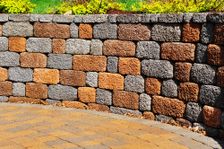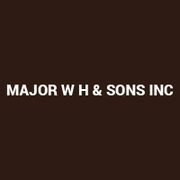
Retaining walls can be visually appealing landscaping features, but they also perform a vital function, supporting the weight of the ground behind them and preventing erosion. Depending on the type of soil, your area’s earthquake risk, and a variety of other factors, landscape engineers use different designs to keep the dirt in place. Below are a few of the most common types of retaining walls.
3 Types of Retaining Walls
1. Gravity Walls
 A gravity wall relies on its own weight to resist the pressure of the soil behind it, although they might have a concrete foundation underneath. If the wall is fairly short, builders may simply use stone without mortar or precast segments of masonry, but more advanced designs are typically used for taller structures. Your builder may recommend reinforcing the soil with steel or concrete or using gabions, which are stacked wire baskets filled with rubble behind a concrete face.
A gravity wall relies on its own weight to resist the pressure of the soil behind it, although they might have a concrete foundation underneath. If the wall is fairly short, builders may simply use stone without mortar or precast segments of masonry, but more advanced designs are typically used for taller structures. Your builder may recommend reinforcing the soil with steel or concrete or using gabions, which are stacked wire baskets filled with rubble behind a concrete face.
2. Cantilevered Walls
Cantilevered walls feature a large footing underground that extends both in front of and beyond the wall, creating an upside-down “T” shape. This design transfers the force of the soil behind the wall into vertical pressure and into the concrete footing, giving cantilevered walls much more strength than gravity wall designs.
3. Anchored Walls
Any type of retaining wall can be modified with anchors to provide additional strength to support higher loads. In most cases, concrete is poured into the soil behind the wall, then attached to the structure itself, although the anchoring system can be adapted to meet the environment and your own aesthetic preferences.
Since 1956, WH Major & Sons has built strong, attractive retaining walls for homeowners throughout the Mukwonago, WI, area. With their expertise with a broad range of styles and materials, they’ll craft a structure that will provide the stability you need, with an appearance you’ll love. Visit their website now for more information on their construction and landscaping services, or call (262) 363-3115 to discuss your project and request a quote.
About the Business
Have a question? Ask the experts!
Send your question

